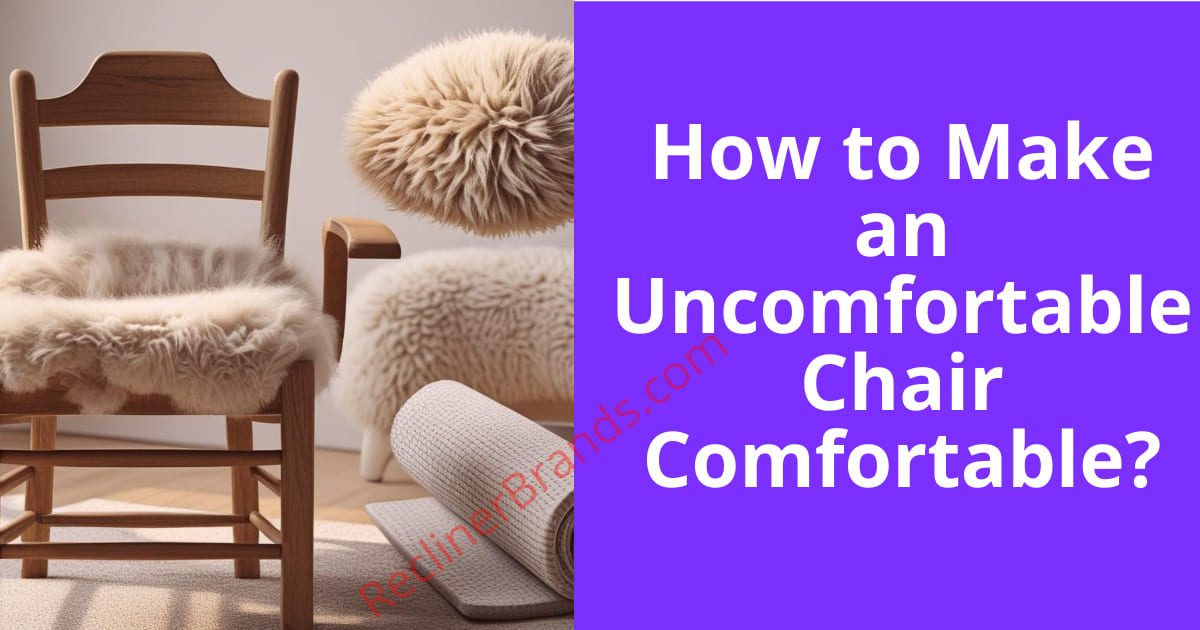Building a cardboard chair is an exciting and environmentally friendly DIY project that combines creativity, engineering, and sustainability. Whether you need an affordable seating solution, want to explore a fun craft project, or aim to recycle unused materials, learning how to build a cardboard chair step by step guide is the perfect way to start.
In this guide, we’ll show you how to create a durable cardboard chair that is both functional and stylish. We’ll also dive into advanced techniques to teach you how to make a cardboard chair that holds weight effectively. Let’s begin!
Why Build a Cardboard Chair?
Cardboard chairs are becoming increasingly popular, not only as an eco-friendly option but also as a creative and functional project. Whether you’re crafting furniture for a specific purpose or looking to experiment with a unique DIY project, learning how to build a cardboard chair step by step offers countless advantages. Here’s an in-depth look at why cardboard chairs are an excellent choice:
1. Environmentally Friendly
Building a cardboard chair is an eco-conscious way to create furniture.
- Recycling Benefits: Cardboard is a recyclable material that’s widely available. By repurposing old boxes or unused sheets, you’re giving waste materials a second life and reducing your carbon footprint.
- Sustainable Crafting: Unlike traditional furniture that requires wood, plastic, or metal, cardboard doesn’t deplete natural resources.
- Biodegradable: Should you decide to dispose of your cardboard chair, it decomposes naturally, leaving minimal environmental impact.
Pair your cardboard chair project with other sustainable practices, like using non-toxic adhesives and paints, to make your entire DIY process eco-friendly.
2. Budget-Friendly
One of the biggest advantages of learning how to build a cardboard chair step by step is its affordability.
- Low-Cost Materials: Cardboard can often be sourced for free from packaging boxes, local stores, or recycling centers.
- No Specialized Tools Needed: Most of the tools required, like utility knives and glue, are inexpensive and easily found in households.
- DIY Savings: Instead of purchasing expensive furniture, a cardboard chair provides a cost-effective alternative, especially for temporary seating needs.
Ask local retailers or supermarkets for their unused cardboard boxes—they’re usually more than willing to give them away for free.

3. Customizable Design
Cardboard offers unmatched flexibility when it comes to customization.
- Personalized Shapes: Unlike rigid materials like wood or metal, cardboard is easy to cut, bend, and shape into various designs. Whether you prefer a minimalist look or a decorative chair with intricate patterns, cardboard makes it possible.
- Color and Style Options: Paint your cardboard chair with vibrant colors, stencil designs, or even cover it with fabric to create a unique look that matches your room’s theme.
- Functionality: Adapt the design to serve different purposes, such as creating a chair for kids, a small seat for a reading nook, or a decorative accent piece for your living room.
Use layering techniques to add texture or raised designs to your chair for a more artistic appearance.
4. Lightweight and Portable
Cardboard chairs are incredibly lightweight, making them highly portable and easy to manage.
- Rearrange with Ease: Unlike heavy wooden or metal chairs, cardboard chairs can be moved effortlessly around the house.
- Perfect for Temporary Setups: They are an excellent choice for events, exhibitions, or temporary living spaces where furniture needs to be moved frequently.
- Compact Storage: When not in use, you can disassemble or fold the chair for convenient storage, saving valuable space.
If portability is a key requirement, consider designing a foldable cardboard chair for even greater convenience.
5. Unique and Fun
Crafting a cardboard chair is not just functional—it’s also a creative and enjoyable experience.
- Perfect for DIY Enthusiasts: Building a chair out of cardboard challenges your crafting and engineering skills, making it a rewarding project.
- Great for Kids and Families: It’s a fun, interactive activity that kids and adults can enjoy together.
- Conversation Starter: A well-made cardboard chair is sure to grab attention and become a talking point in your home or office.
Involve children in decorating the chair. They can add stickers, drawings, or colorful patterns to make it uniquely theirs.
6. Educational Value
Learning how to build a cardboard chair step by step isn’t just a hobby—it’s also a great educational exercise.
- Practical Engineering: It teaches principles of weight distribution, structural integrity, and the strength of materials.
- Creativity Boost: Designing and customizing a chair fosters creative thinking.
- Hands-On Learning: This project can be used in schools or workshops to teach sustainability and problem-solving skills.
7. Versatility
Cardboard chairs can be adapted for different uses, making them incredibly versatile:
- Event Furniture: Ideal for exhibitions, pop-up shops, or themed parties.
- Temporary Seating: Great for college dorms, art studios, or outdoor setups.
- Decorative Pieces: When not in use, these chairs can double as decorative elements in your home.
8. Stress-Free Experimentation
Since cardboard is inexpensive and easy to work with, it’s perfect for experimenting with new ideas.
- Prototype Building: If you’re into furniture design, a cardboard chair is a low-cost way to test new concepts before creating them with more permanent materials.
- Mistakes Are Affordable: Errors in cutting or shaping are less stressful since cardboard is readily available and cheap to replace.
Building a cardboard chair combines creativity, sustainability, and practicality. Whether you’re crafting for fun, education, or functional use, learning how to build a cardboard chair step by step opens up endless possibilities. From eco-consciousness and affordability to customization and portability, cardboard chairs prove that innovative design doesn’t always require expensive materials.
So, grab some cardboard, a utility knife, and your imagination, and get started on your one-of-a-kind project!
Variations of Cardboard Chairs
When you explore how to build a cardboard chair step by step, you’ll realize there are countless design possibilities. Cardboard is a highly versatile material that allows for unique variations, catering to different purposes, styles, and functional needs. From minimalist seating solutions to artistic statement pieces, here are some popular variations of cardboard chairs to inspire your project:
Simple Box-Style Cardboard Chair
This is the most basic and functional design for beginners. A box-style chair is easy to construct and provides reliable support.
- Design Features: A sturdy rectangular base supports the seat, and the backrest is attached directly to the box.
- Best For: Kids, temporary seating, or as a prototype for larger projects.
- Why It Works: The closed box structure evenly distributes weight, making it easier to reinforce for strength.
Foldable Cardboard Chair
If portability and storage are your priorities, a foldable cardboard chair is an excellent option.
- Design Features: Hinged or scored panels allow the chair to collapse flat when not in use.
- Best For: Small spaces, pop-up events, or temporary setups.
- Why It Works: The foldable design maintains functionality while offering the convenience of compact storage.
Use strong tape or rivets to secure the folding joints without compromising durability.
Armchair Design
An armchair-style cardboard chair adds a touch of luxury and extra comfort.
- Design Features: Includes armrests, a wide seat, and a slanted backrest for a more ergonomic experience.
- Best For: Living rooms, reading nooks, or children’s play areas.
- Why It Works: The armrests provide additional structural support, helping the chair hold weight more effectively.
Add padding to the armrests and seat for increased comfort and style.
Sculptural or Artistic Cardboard Chair
For those looking to push creative boundaries, sculptural cardboard chairs are a way to showcase artistry and design innovation.
- Design Features: Intricate shapes, layered patterns, or abstract structures that double as functional seating.
- Best For: Art installations, exhibitions, or unique home décor.
- Why It Works: The flexibility of cardboard makes it ideal for creating complex, visually stunning designs.
Use laser cutting or stencils to achieve precise patterns and details in your sculptural chair.
Modular Cardboard Chair
A modular cardboard chair is built from interlocking panels or pieces, making it easy to assemble, disassemble, or customize.
- Design Features: Sections of cardboard slide into one another, eliminating the need for glue or tape.
- Best For: People who want a customizable design or need a chair that can be taken apart for portability.
- Why It Works: The modular system provides flexibility for different designs and uses while maintaining stability.
Label each modular piece for hassle-free reassembly.

Kid’s Cardboard Chair
A kid-friendly cardboard chair is smaller in size, brightly decorated, and designed to be lightweight and easy to move.
- Design Features: Rounded edges, colorful patterns, and playful shapes like animals or vehicles.
- Best For: Children’s playrooms, schools, or art projects.
- Why It Works: Cardboard is safe and easy for kids to handle, making it perfect for DIY projects they can join.
Add a protective coating to make the chair resistant to spills and wear.
Cardboard Lounge Chair
For ultimate relaxation, try building a lounge-style cardboard chair with a reclined backrest and extended seat.
- Design Features: A sloped design that cradles the body, with reinforced supports for added comfort.
- Best For: Reading corners, outdoor spaces, or personal retreats.
- Why It Works: The lounge design emphasizes comfort while showcasing cardboard’s adaptability to ergonomic shapes.
Incorporate pillows or fabric for an inviting and cozy finish.
Cardboard Rocking Chair
A rocking chair variation adds dynamic motion to your design, making it both fun and functional.
- Design Features: A curved base allows for a rocking motion, paired with a sturdy seat and backrest.
- Best For: Relaxation spaces, nurseries, or as a standout decorative piece.
- Why It Works: With proper reinforcement, cardboard’s lightweight nature makes it an ideal material for a functional rocking chair.
Test the stability and motion thoroughly to ensure a safe and smooth rocking experience.
Cardboard Chair with Storage
Combine functionality and practicality by designing a chair with built-in storage compartments.
- Design Features: A hollow base or armrests that double as storage for books, toys, or accessories.
- Best For: Small apartments, dorm rooms, or children’s playrooms.
- Why It Works: The added storage function maximizes the utility of the chair while maintaining a minimalist footprint.
Add a removable lid or sliding panels to make the storage space easily accessible.
Multi-Seater Cardboard Bench
For larger projects, consider building a cardboard bench to accommodate multiple people.
- Design Features: A long seat with additional support panels or legs to distribute weight evenly.
- Best For: Outdoor events, group seating, or waiting areas.
- Why It Works: A bench design showcases cardboard’s strength and flexibility for heavier loads and broader dimensions.
Reinforce the seat and base with multiple layers of cardboard for added durability.
One of the most exciting aspects of learning how to build a cardboard chair step by step is the ability to experiment with different styles and designs. Whether you’re crafting a functional armchair, a decorative sculptural piece, or a kid-friendly creation, the possibilities are virtually endless.
Tools and Materials Needed
Before you start learning how to build a cardboard chair step by step, gather the following materials and tools:
Materials
- Large sheets of corrugated cardboard (double-layered or thicker)
- Hot glue gun and strong glue sticks
- Duct tape or heavy-duty masking tape
- Pencil and ruler for measurements
- Cutting mat or work surface
Tools
- Utility knife or box cutter (ensure it’s sharp for clean cuts)
- Scissors (for detailed trimming)
- Sandpaper (to smooth edges)
- Clamps (optional, for holding pieces while glue dries)
How to Build a Cardboard Chair Step by Step Guide
Creating a sturdy cardboard chair involves careful planning, precise cutting, and smart assembly. Here’s a complete guide to help you succeed:

Step 1: Plan Your Design
Before cutting or assembling, take time to plan your chair design. Decide on:
- Chair Type: Choose between a simple stool, a full-back chair, or a box-style design.
- Dimensions: A standard chair seat is about 18 inches high. Adjust the dimensions based on who will use it.
- Weight Capacity: If you want to learn how to make a cardboard chair that holds weight, plan a design with reinforced support, such as double-layered legs or a box-style base.
Sketch your design on paper and label all the pieces you’ll need, including the seat, backrest, legs, and any reinforcement panels.
Step 2: Select and Prepare Cardboard
Not all cardboard is created equal. Choose thick, corrugated cardboard for its strength and durability.
- Inspect the Cardboard: Ensure it’s free of creases or water damage, as these weaken the material.
- Cut Sheets to Size: Trim large sheets into manageable pieces that fit your design dimensions.
For a stronger chair, glue two layers of cardboard together and let them dry before cutting.
Step 3: Cut the Pieces
Using your measurements and design sketch, cut out the following pieces:
- Seat: The flat surface for sitting.
- Backrest: The vertical panel that supports your back.
- Legs or Base: Either four legs or a box-style base to hold up the seat.
- Support Panels: Reinforcements for added stability, especially if you’re working on how to make a cardboard chair that holds weight.
Label each piece with a pencil to keep your work organized.
Step 4: Assemble the Frame
Start by creating the basic structure of the chair:
- Base and Legs: Attach the legs or box base to the seat using glue or duct tape. Ensure all pieces are aligned and stable.
- Reinforcements: Add horizontal support panels between the legs or inside the base to distribute weight evenly.
- Backrest: Attach the backrest to the seat using glue and secure it with triangular cardboard braces for extra support.
Use clamps or heavy objects to hold pieces together while the glue dries.
Step 5: Reinforce for Strength
To ensure your chair holds weight, reinforce all critical areas:
- Seat: Add extra layers of cardboard to the seat to prevent sagging.
- Joints and Corners: Strengthen corners and joints with additional tape or glued cardboard strips.
- Backrest Connection: Use double layers of cardboard and triangular supports where the backrest meets the seat.
This step is especially important when learning how to make a cardboard chair that holds weight, as reinforcements ensure durability.
Step 6: Test the Chair
Carefully test your chair for stability and strength:
- Incremental Testing: Start with lighter objects and gradually add more weight.
- Check for Weak Points: If any areas buckle or feel unstable, add more reinforcements.
Step 7: Decorate and Finish
Once the structure is complete, let your creativity shine:
- Paint: Use acrylic paint or spray paint to give your chair a vibrant finish.
- Fabric Covers: Add a layer of fabric to the seat and backrest for comfort and style.
- Patterns and Designs: Use stencils or markers to personalize the chair with patterns, names, or quotes.
Allow the chair to dry fully before use.

How to Make a Cardboard Chair That Holds Weight
Building a cardboard chair that is sturdy enough to hold weight requires careful planning, precise construction, and the use of durable materials. If you want to create a chair that is both functional and reliable, follow these tips and techniques to ensure your design can support significant weight while maintaining structural integrity. This section focuses on how to make a cardboard chair that holds weight, using strategies that enhance strength and stability.
1. Choose the Right Type of Cardboard
The type of cardboard you use plays a crucial role in the chair’s ability to hold weight.
- Corrugated Cardboard: Opt for thick, multi-layered corrugated cardboard, as it is stronger and more durable than single-layer cardboard.
- Double-Wall or Triple-Wall Cardboard: These types are even sturdier and ideal for supporting heavier weights.
Avoid using cardboard that has been bent, creased, or exposed to moisture, as it weakens the material’s strength.
2. Reinforce Key Areas with Layers
Layering cardboard is one of the most effective ways to make your chair strong enough to hold weight.
- Double-Up on the Seat and Legs: Add multiple layers to areas that bear the most pressure, such as the seat and legs.
- Glue or Tape Layers Together: Use a strong adhesive or heavy-duty tape to bind the layers firmly. This prevents separation when the chair is under stress.
Alternate the direction of the cardboard’s corrugation (fluted lines) between layers to distribute weight more evenly.
3. Use Triangular Braces for Support
Triangles are one of the strongest shapes in construction and can greatly enhance the stability of your chair.
- Add Triangular Braces: Place triangular supports where the legs meet the seat and backrest.
- Reinforce Joints: Use small triangular pieces of cardboard at the corners and joints to strengthen the overall structure.
Secure the braces tightly with glue and tape to prevent shifting under pressure.
4. Focus on Weight Distribution
A well-designed chair distributes weight evenly, reducing the risk of collapse.
- Wide Base: Ensure the base of your chair is wide enough to prevent tipping or wobbling.
- Center of Gravity: Position the seat slightly toward the middle of the base to keep the chair balanced.
- Leg Design: Instead of individual legs, consider a box-like base for greater stability and weight-bearing capacity.
5. Glue and Tape for Maximum Durability
Using the right adhesive techniques ensures the cardboard holds up under heavy weight.
- Hot Glue Gun: A hot glue gun is ideal for creating strong, quick-drying bonds between cardboard pieces.
- Heavy-Duty Tape: Reinforce seams, edges, and joints with duct tape or industrial-strength masking tape.
Apply glue evenly and let it dry completely before testing the chair’s strength.
6. Test the Chair Incrementally
Before putting the chair to full use, test its strength with increasing weights.
- Start Light: Begin by placing lighter objects (e.g., books) on the chair to assess its stability.
- Gradually Add Weight: Slowly increase the weight, ensuring each part of the chair remains secure.
- Reinforce as Needed: If you notice weak points, add more layers or braces to strengthen the structure.
7. Keep the Environment in Mind
Cardboard is sensitive to moisture, which can weaken its structural integrity over time.
- Keep it Dry: Avoid placing the chair in damp or humid areas.
- Seal the Surface: Use a waterproof coating, such as polyurethane or clear sealant, to protect the cardboard from moisture.
Example Design for a Sturdy Cardboard Chair
Here’s a simple design plan to create a cardboard chair that holds weight:
- Base: Use a box-like structure for the base instead of individual legs. A solid base distributes weight evenly and eliminates weak points.
- Seat: Layer three or more sheets of corrugated cardboard for the seat, ensuring it is thick and firm.
- Backrest: Attach the backrest securely using triangular braces at the joints where it meets the seat.
- Support Panels: Add vertical support panels under the seat to connect the base and the seat directly for additional stability.
This design ensures your chair is not only functional but also robust enough to handle regular use.
Final Tips for Success
- Don’t Rush the Build: Allow glue and tape to dry completely before moving on to the next step.
- Test Regularly: Continuously test the structure as you build to catch any weak points early.
- Experiment with Designs: Adjust the design to include curves, layers, or additional supports for added strength.
By following these steps, you’ll master how to make a cardboard chair that holds weight, ensuring it’s both durable and practical. Whether you’re creating this chair for fun, function, or as a creative project, these techniques will guarantee a sturdy and reliable result.
FAQs (Frequently Asked Questions): How to Build a Cardboard Chair Step by Step Guide
How much weight can a cardboard chair hold?
Answer: A well-designed and reinforced cardboard chair can hold up to 200–300 pounds, depending on the quality of the cardboard and the construction method.
How can I make my cardboard chair more durable?
Answer: Double-layer the cardboard, add reinforcement panels, and use strong adhesive. Focus on reinforcing joints and weight-bearing areas for maximum durability.
What tools are best for cutting cardboard?
Answer: A utility knife or box cutter is ideal for clean, precise cuts. Use a cutting mat to protect your workspace and achieve straight edges.
Can I make a waterproof cardboard chair?
Answer: Yes, by applying a waterproof sealant or polyurethane coating, you can make your cardboard chair resistant to moisture. However, avoid prolonged exposure to water.
Is it safe to sit on a cardboard chair regularly?
Answer: If built and reinforced properly, a cardboard chair is safe for light to moderate use. For regular use, ensure it’s built to hold the required weight and is maintained well.
Conclusion
Learning how to build a cardboard chair step by step guide is a rewarding DIY project that combines creativity, sustainability, and functionality. By following this guide and reinforcing the structure, you can create a stylish, durable chair that serves as both a practical piece of furniture and a unique artistic expression.
Whether you’re crafting this chair for fun, functionality, or a school project, applying the techniques discussed ensures it’s sturdy enough for daily use. Now that you know how to make a cardboard chair that holds weight, you can design chairs tailored to your needs while embracing eco-friendly practices.




